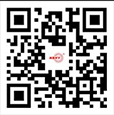Bearing maintenance and judgment
When judging whether the disassembled bearing can be reused, check the bearing after cleaning, carefully check the wear of the raceway surface, rolling surface, matching surface, cage, whether the bearing clearance increases, and whether the dimensional accuracy decreases. Damage, abnormality. For small ball bearings that cannot be separated, use a single-handed flat end inner ring and rotate the outer ring to check whether it is smooth. The rolling elements and rolling surfaces of the outer ring of separate bearings such as tapered roller bearings can be checked separately. Large bearings cannot be rotated by hand. Pay attention to the appearance of rolling elements, raceways, cages, ribs, etc. The higher the importance of the bearing, the more careful the inspection required. When judging whether the bearing can be used again, it should be determined based on the degree of damage to the bearing, mechanical properties, importance, working conditions, inspection time and other relevant factors. However, if the following defects are found during the inspection, the bearing can no longer be used and needs to be replaced with a new one.
1. Any of the inner ring, outer ring, rolling element and cage has cracks or gaps.
2. Any of the rings and rolling elements has fractures.
3. There are obvious scratches on the rolling surface, ribs and rolling elements.
4. The cage is obviously worn, or the rivets are obviously loose. There is rust or scratches on the raceway surface and rolling elements. There are serious dents or bruises on the raceway surface and rolling elements. There is obvious creep on the inner diameter surface of the inner ring or the outer diameter surface of the outer ring, and obvious discoloration due to overheating.
5. The bearings sealed with grease, the seals or dust covers are seriously damaged.





